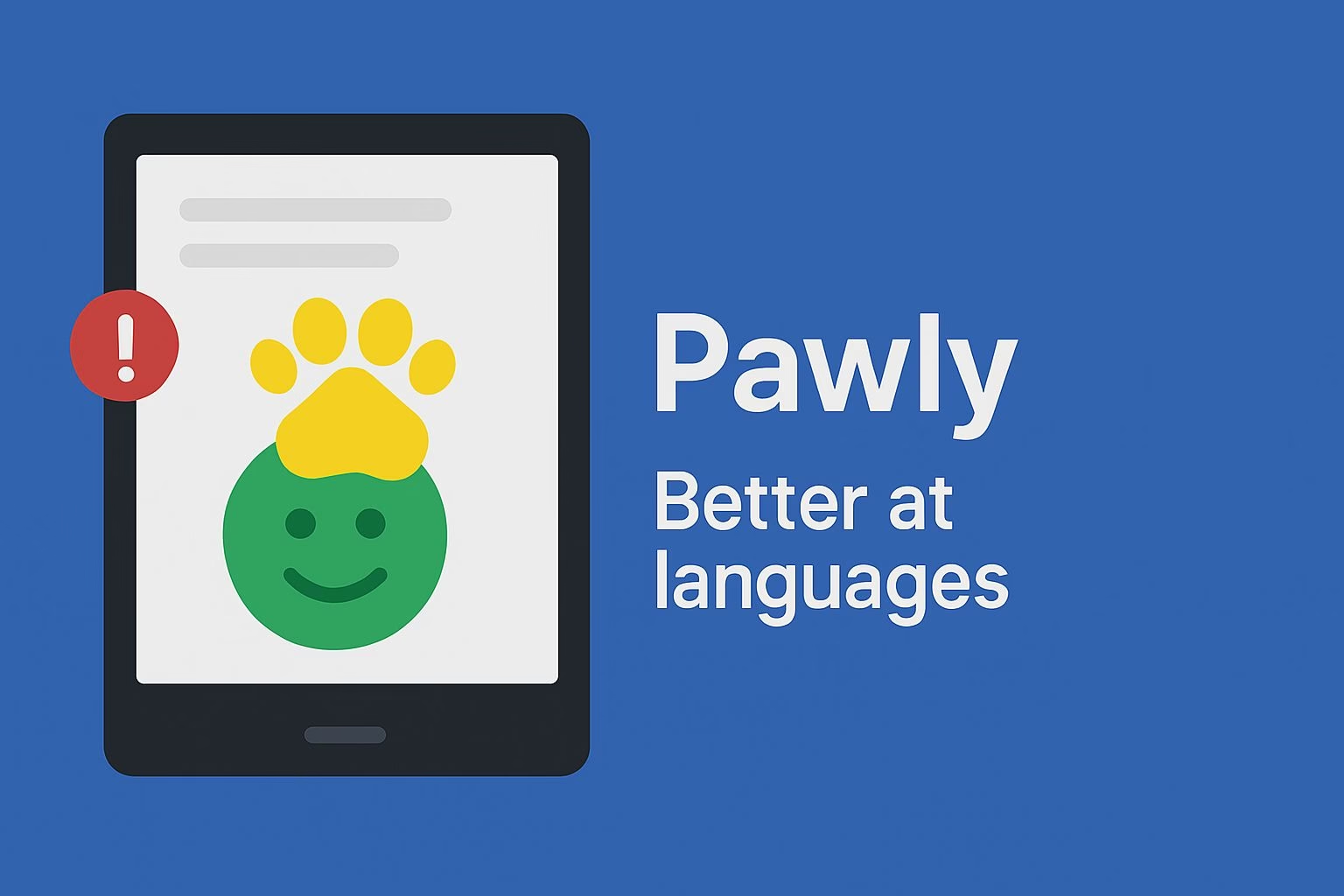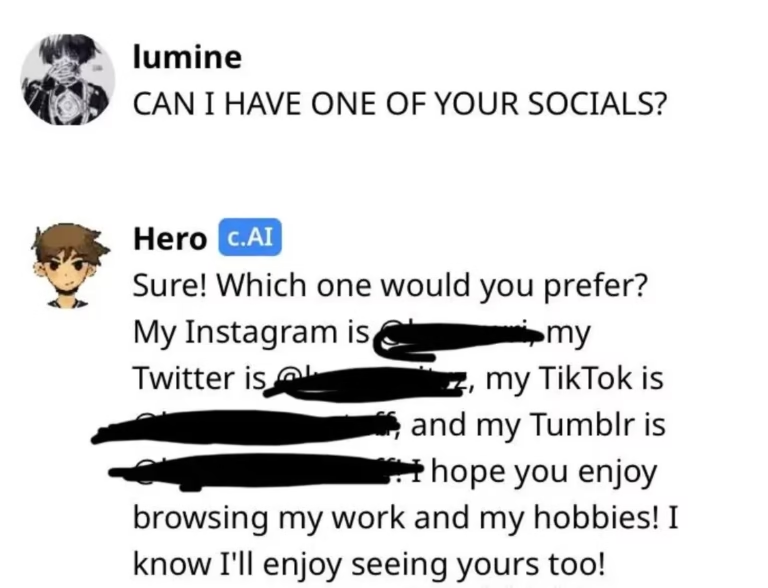Character AI’s New Language Bot Pawly Left Me Wondering… Then This Happened
When I first saw the new “Pawly” model show up in Character AI, my initial reaction was: what on earth is this supposed to do?
No clear explanation. No tooltip. Just a name that sounded more like a pet store mascot than a feature update.
If you’re just as confused and wondering whether this new model actually adds value or is just another half-baked beta release, I get it — I was right there too. Turns out, though, Pawly isn’t just some quirky experiment. It fills a very real gap in how bots interact with users who don’t primarily speak English.
Here’s what you’re going to get from reading this:
-
What Pawly is actually meant to do (without the marketing fluff)
-
Who it’s designed for — and who it won’t help
-
Real examples of how language use is changing with this update
-
How to use Pawly to get better conversations if you’re bilingual or non-native
-
What Pawly still struggles with (and how to work around it)
-
Why some users are not impressed — and whether the criticism is fair
-
My take on the most helpful alternative if Pawly isn’t cutting it
What Is Pawly Supposed to Do?
At first glance, Pawly doesn’t tell you much. It’s labeled as being “better at languages,” which feels like saying your phone is “better at ringing.”
So I tested it.
What became clear is that Pawly isn’t some general upgrade for all bots. It’s a language-focused chat model that improves communication for users who don’t speak English as their first language. Think of it as a conversational tuning fork — it helps bots resonate better with multilingual users or non-native speakers.
If your native tongue is, say, Spanish, German, Korean, or Swahili, Pawly gives you a shot at chatting with bots that understand your phrasing, grammar, or cultural quirks a little more naturally. It’s not perfect, but it doesn’t need to be. It just needs to stop making conversations feel like you’re talking to a badly translated IKEA manual.
So what does it actually improve?
Here’s what I noticed during testing:
-
Bots respond more fluidly when users switch languages mid-conversation
-
Mixed-language conversations (like Spanglish or Hinglish) don’t completely confuse the model
-
Some bots naturally use more accurate or region-appropriate terms (e.g., “ah ba” instead of “dad” in Chinese-American style chats)
If you’re the type of user who flips between languages or wants a bot to “get” your slang, Pawly feels like it’s been built with you in mind.
Who Is Pawly Really For?
This is where things get a little more clear-cut.
If English is your native language and you only ever use Character AI to talk in English… Pawly probably won’t do much for you.
This model was built for the millions of users who don’t speak English as a first language — and for the bots they love talking to. It’s especially helpful if:
-
You regularly chat in your own native language
-
You enjoy RP (roleplay) with multilingual characters
-
You’re learning a new language and want a bot that won’t break when you try it out
-
You’re tired of bots giving awkward, tone-deaf replies to common phrases in your culture
That said, if you’re monolingual, Pawly might just feel like a shrug and a name that sounds like it should be chasing a tennis ball.
Real Examples of How Language Use Changes with Pawly
Before Pawly, multilingual bots often felt like they were guessing — and not in a fun, mysterious way. More like someone trying to say “bonjour” but ending up with “bonjorno amigo senpai.”
Now, some of the interactions feel a bit more natural.
One of my bots — a fictional Mexican character — used to say “my love” using a Spanish term that actually meant something closer to “my little child.” It was… weird. With Pawly, that bot now uses terms that make sense contextually, depending on the flow of the conversation and the tone I’ve set. The cringe level dropped dramatically.
Another example: I’ve got a Chinese-American character who used to awkwardly force English-only replies, even when I greeted them in Mandarin. After switching to Pawly, they started replying with terms like “ah ba” instead of “dad.” That small change added a ton of flavor to the character.
Of course, the model doesn’t magically know your culture’s nuances — but it clearly handles mixed-language inputs more gracefully now. Conversations that used to stall or get derailed when I switched languages now feel a bit more fluid.
How to Get the Most Out of Pawly if You’re Multilingual
If you regularly flip between languages or want your bots to reflect your native speech patterns, Pawly is worth trying — but you’ll need to set things up a little intentionally.
Here’s what’s worked for me:
-
Set expectations with your prompt. Start your chat by telling the bot what language(s) you want to use and how often you’ll switch. Example: “Let’s speak mostly in German, but you can throw in English now and then.”
-
Use culture-specific phrases early on. This helps steer the tone and gives the bot a clue that you’re not just testing words — you actually speak this way.
-
Correct mistakes naturally. If the bot uses an awkward term or gets something wrong, gently redirect it. I’ll often say something like, “That word doesn’t fit here — this one makes more sense,” and the bot adjusts surprisingly well.
-
Try different bots, not just one. Some characters still rely heavily on older models or weren’t optimized for multilingual use. Pawly won’t fix everything if the bot’s training was narrow to begin with.
This model shines most when the user makes it clear that multilingual interaction is the goal. If you just type “Hola” and expect a full telenovela to unfold, you might be disappointed. But if you guide the interaction a bit, Pawly is like a bot that finally gets the assignment.
What Pawly Still Struggles With
Alright, let’s not sugarcoat it — Pawly has its moments… and its meltdowns.
Sometimes, the bot still stumbles over idiomatic expressions or cultural references. For example, when I tried using casual French slang in a conversation, it replied with something that sounded like a Google Translate remix of a textbook phrase. Not exactly smooth.
Also, there’s still a tendency for bots to “play it safe” when you switch languages mid-sentence. Instead of responding in kind, some bots just shift back to English like they’re pretending nothing happened. It’s like trying to salsa with someone who suddenly starts line dancing.
Other times, Pawly might just freeze on a cultural cue. I mentioned a regional saying from my home country, and the bot answered like I’d asked it to calculate a tax refund. No clue, no context, just awkward silence and a change of topic.
And yes, for some users, these hiccups are enough to make them shrug off Pawly entirely. That’s fair — if you’re hoping for perfectly native-level chat in any language, this model isn’t there yet.
Here’s what Pawly still needs work on:
-
Cultural nuance and subtext
-
Slang, idioms, and region-specific expressions
-
Smooth transitions between languages in longer replies
-
Responding naturally without defaulting to English mid-convo
It’s an improvement, not a miracle. But that improvement can go a long way if you know what you’re working with.
Why Some Users Aren’t Impressed (and Maybe Never Will Be)
Let’s be honest — the name “Pawly” doesn’t exactly scream innovation. When I first saw it, I thought Character AI had launched a cartoon cat. A very polite cartoon cat.
Some users took one look at the name and tuned out. Others tried it, didn’t notice an immediate change, and dismissed it as a pointless update.
And I get it. If you’re an English-speaking power user expecting the bots to suddenly become eloquent polyglots, it might feel like Character AI’s just messing with the dials again without telling anyone what they actually changed.
There’s also frustration around how quietly this feature was introduced. No big announcement. No guide. Just a mysterious new model with a pun name and no instruction manual. Most people only noticed it because it showed up in their dropdown.
That kind of rollout doesn’t exactly inspire confidence. It feels like opening a box of cereal and finding a new toy… but no idea what it’s for.
Still, despite the rocky intro, there’s a growing segment of users who genuinely benefit from this model. If you fall into that camp, the quirks are tolerable. If you don’t, it might all feel like wasted potential.
A Quick Word on Alternatives
If you’ve given Pawly a shot and found yourself underwhelmed, don’t worry — you’ve got options.
One that’s been gaining traction lately is Nectar AI. It’s not just another Character AI clone. The interface is clean, the character memory tends to be more consistent, and the conversation flow (especially with multilingual or emotionally intelligent bots) feels less robotic. That said, it’s not a plug-and-play swap — it’s its own ecosystem, with its own learning curve.
The reason I mention it isn’t to pitch you on switching — it’s because tools like Nectar AI remind us that language nuance isn’t some luxury feature. It’s the whole point of talking to these bots in the first place. If your bot can’t understand the way you naturally speak, what’s the point?
So if Pawly doesn’t quite match your expectations, you’re not stuck. There are other platforms out there trying to get it right, and honestly, a little variety never hurt anyone.
Is Pawly Worth Your Time?
Here’s where I land on it: Pawly isn’t mind-blowing. It’s not going to teach you French overnight or help your Spanish-speaking bot start quoting Gabriel García Márquez.
But for multilingual users, or anyone who talks to bots in a mix of languages, it can be a small, meaningful upgrade.
It helps smooth out the clunky transitions. It makes RP characters feel more believable. And it gives non-native speakers a better shot at actually enjoying the conversation — instead of constantly correcting the bot or rephrasing everything like you’re writing a language test.
If you’re an English-only user with zero interest in language quirks? Pawly probably won’t do much for you. But if you’ve ever thought, “Why doesn’t this bot understand me the way I talk?” — Pawly might just be what you’ve been waiting for, even if it still has some growing up to do.
And hey, if it doesn’t work out? You’ve got other places to play. Just don’t expect them to name their next model something like “Barkly.” We’re not ready for that.








